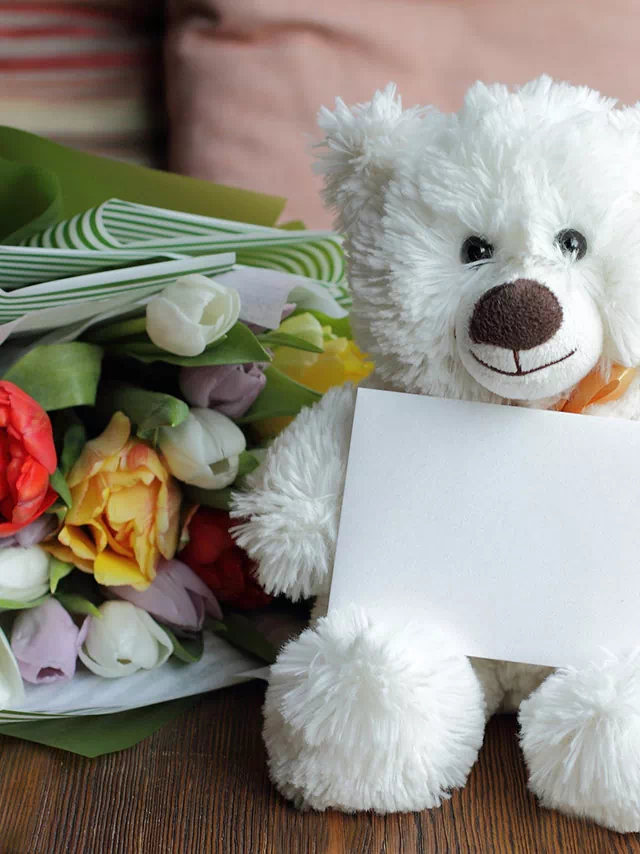Travelling and exploring different cultures is an exciting and enriching experience, especially when it comes to discovering how different countries celebrate holidays. Valentine’s Day is no exception, as this holiday is celebrated in various ways around the world, with different traditions and customs. In this continuation of our exploration of Valentine’s Day traditions from around the globe, we will look at five more countries and their unique ways of celebrating this day of love. From Estonia’s “Friend’s Day” to Iran’s “Sepandarmazgan,” each country has its own way of expressing love and appreciation for the people in their lives. So, let’s dive into the fascinating world of Valentine’s Day traditions from around the world and discover more ways of celebrating this special day.
Japan
In Japan, Valentine’s Day is a day for women to show their love and appreciation for the men in their lives. Women typically give chocolates to their male friends, colleagues, and romantic partners. The chocolates come in different varieties and are categorized into different types depending on the relationship between the giver and the receiver. The most common type of chocolate is giri-choco, which means “obligation chocolate” and is given to male coworkers, bosses, and acquaintances. Honmei-choco, on the other hand, is given to romantic interests and is typically more expensive and higher quality. In recent years, there has been a growing trend of men returning the favor on White Day, which is celebrated on March 14th.
South Korea
Valentine’s Day in South Korea is also celebrated by women giving chocolates to men, but the tradition is extended over a month. On February 14th, women give chocolates to their male friends, colleagues, and romantic partners. On March 14th, also known as White Day, men are expected to return the favor by giving gifts and candies to women. And on April 14th, also known as Black Day, singles who did not receive any gifts on the previous two occasions gather to eat black bean noodles and commiserate about being single.
Brazil
In Brazil, Valentine’s Day is celebrated on June 12th, which is the eve of the feast day of St. Anthony, the patron saint of marriage. The holiday is known as Dia dos Namorados, which means “Lovers’ Day.” Couples exchange gifts, flowers, and cards, and it is also common to see public displays of affection on this day. In addition to the traditional Valentine’s Day gifts, it is also common for couples to go out to dinner or to see a movie.
Denmark and Norway
In Denmark and Norway, Valentine’s Day is not as big of a holiday as it is in other countries, but they do have a similar holiday called “Valentinsdag” or “Valentinsdagen.” It is more of a friendship day, where people exchange small gifts and cards with their friends, rather than romantic partners. The holiday is not as commercialized as it is in other countries, and people tend to focus more on spending time with their loved ones.
South Africa
In South Africa, Valentine’s Day is celebrated much like it is in other countries, but with an added twist. Women wear their hearts on their sleeves by pinning the name of their love interest on their shirt sleeve for all to see. The tradition is called “Lupercalia,” and it is believed to have originated in ancient Rome. In addition to the traditional Valentine’s Day gifts, it is also common for couples to exchange handmade gifts or to go out to dinner.
France
France, known as the city of love, has a long-standing reputation for being a romantic destination. Valentine’s Day in France is celebrated much like it is in other countries, but with a special emphasis on romance and love. Couples often exchange cards, flowers, and chocolates, and it is common to see couples walking hand in hand through the streets. Paris, in particular, is known for its romantic ambiance, and couples often take romantic strolls through the city or enjoy a candlelit dinner at a fancy restaurant.
Italy
Italy, like France, is also known for its romantic ambiance, and Valentine’s Day is a popular holiday for couples. The holiday is known as San Valentino, and couples often exchange gifts, flowers, and cards. In addition to the traditional gifts, it is also common to see couples taking romantic walks through the city or enjoying a special meal together. In some parts of Italy, it is also traditional for couples to attach padlocks to bridges and throw away the key as a symbol of their love.
Mexico
In Mexico, Valentine’s Day is known as “El Día del Amor y la Amistad” or “The Day of Love and Friendship.” The holiday is celebrated much like it is in other countries, but with an added emphasis on friendship. It is common for people to exchange gifts and cards with their friends as well as their romantic partners. In addition to the traditional gifts, it is also common to see people giving small tokens of affection, such as heart-shaped balloons or candy.
India
In India, Valentine’s Day is a relatively new holiday and is primarily celebrated among young people. The holiday is not widely recognized by the older generations, and some conservative groups have even protested against it. However, despite the controversy, Valentine’s Day is gaining popularity among young people in India, and it is common for couples to exchange gifts and cards. In recent years, there has also been a growing trend of celebrating “Friendship Day” on February 14th, where people exchange gifts and cards with their friends.
Philippines
In the Philippines, Valentine’s Day is a popular holiday, and it is common for couples to exchange gifts, flowers, and cards. It is also traditional for people to attend Mass and offer prayers for their loved ones. In recent years, there has been a growing trend of celebrating “Valentine’s Week,” which includes different themes for each day, such as “Rose Day,” “Chocolate Day,” and “Teddy Day.”
Estonia
In Estonia, Valentine’s Day is known as “Sõbrapäev,” which translates to “Friendship Day.” While couples may exchange gifts and cards, the holiday is primarily a celebration of friendship. It is traditional for people to exchange small gifts or cards with their friends and family members as a way to show their appreciation for their loved ones.
Taiwan
In Taiwan, Valentine’s Day is celebrated on February 14th, but it is also common to celebrate “Qixi Festival,” which is also known as “Chinese Valentine’s Day.” Qixi Festival is celebrated on the seventh day of the seventh lunar month, and it is a celebration of the legendary story of the Cowherd and Weaver Girl. On this day, couples exchange gifts, flowers, and cards, and it is traditional for people to release lanterns into the sky as a symbol of their love.
Spain
In Spain, Valentine’s Day is known as “Dia de San Valentin,” and it is celebrated much like it is in other countries, with couples exchanging gifts, flowers, and cards. However, there is also a unique tradition known as “Dia de Sant Jordi,” which is celebrated on April 23rd. On this day, couples exchange gifts, but it is also traditional for men to give their female partners a red rose, while women give their male partners a book.
Finland
In Finland, Valentine’s Day is known as “Ystävänpäivä,” which translates to “Friendship Day.” While couples may exchange gifts and cards, the holiday is primarily a celebration of friendship. It is traditional for people to exchange small gifts or cards with their friends and family members as a way to show their appreciation for their loved ones.
Scotland
In Scotland, Valentine’s Day is celebrated with a unique tradition known as “Valentine’s Day Eve.” On February 13th, women write the names of their crushes on pieces of paper and then pin them to their sleeves. This tradition is known as “Tooting,” and it is said to bring good luck in finding love. In addition, it is traditional for men to give their female partners a gift, which is known as a “love token.”
Wales
In Wales, Valentine’s Day is celebrated with a unique tradition known as “Love Spoons.” These are intricately carved wooden spoons that are given as gifts to romantic partners. The spoons are carved with different symbols that have different meanings, such as hearts for love, horseshoes for good luck, and knots for eternal love.
Saudi Arabia
In Saudi Arabia, Valentine’s Day is not officially recognized or celebrated, as public displays of affection are not allowed in the country. However, some couples may still choose to celebrate the holiday in private, with gifts and flowers exchanged discreetly.
Argentina
In Argentina, Valentine’s Day is known as “Dia de San Valentin,” and it is celebrated much like it is in other countries, with couples exchanging gifts, flowers, and cards. However, it is also traditional for people to exchange sweet messages and poems with their romantic partners, often accompanied by small gifts or tokens of affection.
Romania
In Romania, Valentine’s Day is known as “Dragobete,” and it is celebrated on February 24th. It is traditional for people to exchange small gifts, cards, and flowers with their romantic partners. However, it is also traditional for young people to go out into the woods and gather snowdrops, which are believed to have magical properties and bring good luck in love.
Ghana
In Ghana, Valentine’s Day is known as “Chocolate Day,” and it is celebrated on February 14th. It is traditional for people to exchange gifts of chocolate with their loved ones, and there are often special events and promotions at chocolate shops and factories.
Slovenia
In Slovenia, Valentine’s Day is known as “Zdravko’s Day,” after a famous Slovenian poet. It is celebrated on February 14th, and it is traditional for people to exchange gifts, cards, and flowers with their romantic partners. However, it is also traditional for people to give gifts to their friends and family members, as a way of showing appreciation for all types of love.
Iran
In Iran, Valentine’s Day is not officially recognized, but there is a similar holiday called “Sepandarmazgan,” which is celebrated on February 17th. It is traditional for people to exchange gifts, cards, and flowers with their loved ones, and to show appreciation for all types of love and relationships.
Learning about how different cultures celebrate Valentine’s Day is a wonderful way to broaden one’s horizons and gain a deeper appreciation for the diversity of our world. From the romantic gestures of France and Italy to the friend-focused celebrations of Estonia and Mexico, each country has its unique way of expressing love and appreciation. Exploring these traditions and customs can also inspire new ideas for celebrating the holiday, whether you’re looking to surprise your partner with a special gift or show your friends how much you care. As we continue to connect and learn from each other, Valentine’s Day remains a beautiful reminder of the importance of love and human connections, no matter where we are in the world.
















